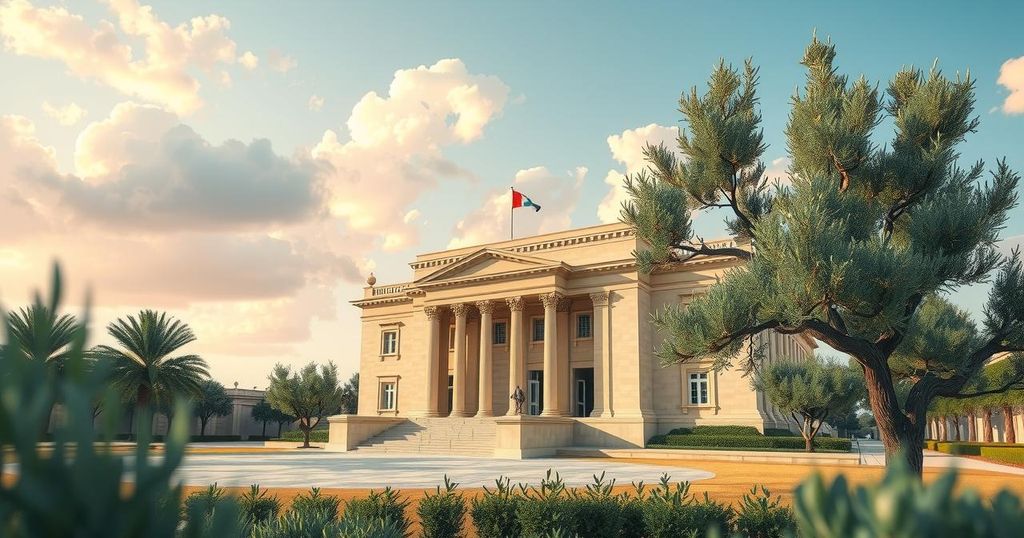Syria Installs New Transitional Government Following Assad’s Ouster

Syria has sworn in a new transitional government, focusing on stability post-Assad. The diverse 23-member Cabinet excludes SDF representatives but retains some interim ministers. Amidst ongoing challenges, this government aims for peace and seeks to lift economic sanctions affecting the population.
On March 30, 2025, Syria inaugurated a new transitional government, marking a significant step nearly four months after the ousting of the Assad family. Focused on restoring stability, this cabinet consists of 23 members representing a diverse array of religious and ethnic groups, serving as the first formation under the country’s five-year transitional framework. It replaces the interim government established after the former president’s removal in December.
This newly formed government operates with a secretary-general instead of a prime minister, as per the temporary constitution signed by interim President Ahmad al-Sharaa. Announced shortly before the Eid al-Fitr celebration, the cabinet retains foreign and defence ministers from the interim administration, while new appointments include Anas Khattab as the Interior Minister, previously head of the intelligence department.
In his speech, al-Sharaa emphasized that this government formation “is a declaration of our joint will to build a new state,” signaling a commitment to reform. The Defence Minister, Murhaf Abu Qasra, voiced intentions to create a professional army that reflects the populace. Notably, the government does not contain representatives from the US-backed Kurdish-led Syrian Democratic Forces (SDF) or from the autonomous northeast Syria administration.
Despite this absence, al-Sharaa and SDF commander Mazloum Abdi recently signed a crucial agreement in Damascus, facilitating a nationwide ceasefire and the inclusion of SDF forces within the Syrian army. Noteworthy ministerial appointments reflect inclusivity; among them is Hind Kabawat, a long-time opponent of Assad, named Minister of Social Affairs and Labour, and Raed Saleh, formerly of the White Helmets, now serving as Minister for Emergency Disasters.
With the objective of ending the prolonged conflict, the government aims to pave the way for peace. The recent uprisings in coastal areas, predominantly Alawite, have claimed over 1,000 lives, exacerbating tensions as Assad, an Alawite, was succeeded by Sunni-rebel groups.
Through diverse representation, al-Sharaa seeks to demonstrate to Western nations a dedication to inclusive governance, potentially aiding in the lifting of extensive economic sanctions that cripple the nation. According to UN estimates, around 90% of the population currently lives in poverty, amidst severe food shortages caused by the ongoing crisis.
In an advisory leading up to the government announcement, the US State Department alerted its citizens to increased risks of attacks during the Eid al-Fitr festivities. The warning referenced possible threats to embassies and public institutions in Damascus, highlighting concerns regarding armed assaults and explosive devices.
The establishment of Syria’s new transitional government represents a pivotal moment in the country’s recovery efforts following the removal of the Assad regime. With an inclusive cabinet and a focus on rebuilding, the government aims to restore stability and effectiveness after years of conflict. However, lingering tensions and the absence of key political groups such as the SDF may pose challenges as the nation seeks peace and international support.
Original Source: indianexpress.com








